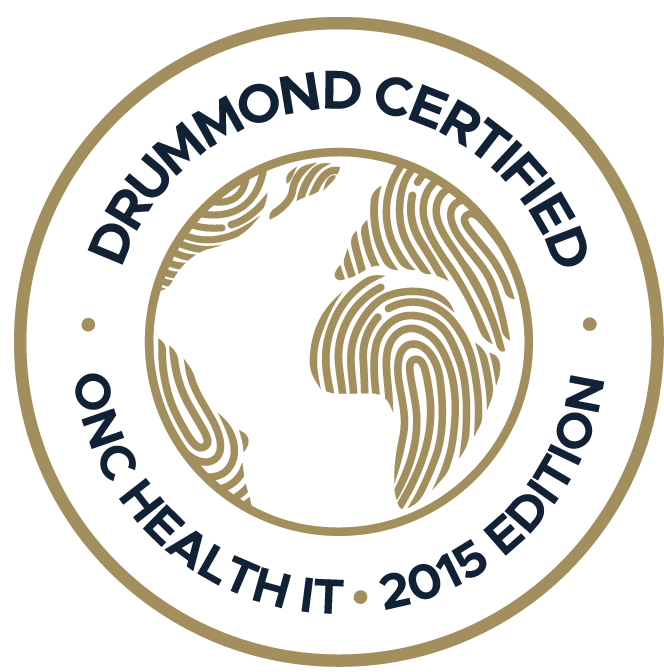Operating a family medicine practice is all about doing multiple tasks—from managing patient records to coordinating care for diverse families—at the same time. Just imagine a dedicated family health practitioner who...
How many times have you asked yourself, your staff, or your medical billing specialist, “Where is the money?” Revenue Cycle Management (RCM) answers that question.
What is RCM? RCM refers to the process of managing your revenue stream from revenue generation activities, i.e., completed patient visits, all the way through to medical billing, insurance claims, reimbursement and, finally, money in the bank.
Areas Covered by Revenue Cycle Management
The crucial word in Revenue Cycle Management is management. Management means that a designated person from your staff, your electronic health record (EHR) RCM account manager, or your biller understands and manages the following:
1. Task assignments that result in missed revenue opportunities such as:- outstanding documentation
- slow staff response to billing
- clearinghouse delays
- collection delays
2. Total outstanding revenues:
- This includes calculating contractual differences between dollars billed through medical billing activities and your actual anticipated revenues.
- Accounts receivable by 30/60/90 and 120 days to identify any revenue bottlenecks.
3. Plan aging by insurance company including:
- denials being worked
- denials not being worked with explanations
- write-offs with explanations
- single code payment problems or denials
4. Payer source comparison analysis includes visit volume, percentage of total visits, total dollars billed for those visits, the average dollar amount per visit, the percentage received vs. the percentage billed, the outstanding dollar amount vs. the amount paid, and the average days to payment.
5. Patient balance aging, including patient credit balances and unapplied revenue.
6. Revenue loss associated with patient cancellations and no-show information compared with reschedule percentage rates.
How Revenue Cycle Management Helps Your Bottom Line
Back-office Revenue Cycle Management carries equal business weight to your actual revenue generation from patient care because it realizes profits for your efforts. This does not happen automatically and requires that the working relationship supporting revenue management include: 1) task accountability processes associated with billing and collections, 2) communication transparency between you and your biller, and 3) visibility of all revenue-related records all the time.
- Task accountability - begins with delegated task assignments that can be accomplished within expected timeframes through hard, focused work. There is nothing more frustrating to administrative support staff than to work as hard as possible and fall further and further behind. The tasks mentioned above are not small, and each element deserves proper attention. Ask yourself honestly:
- Do you have the skilled and experienced staff members you need to keep up with revenue management?
- Does your EHR work with your staff to help them accomplish their tasks?
- A good EHR will minimize the number of skilled staff members required to manage the revenue cycle.
- Similarly, does your EHR flag missing or incorrect information that can lead to payment denials?
- Does your staff have the necessary certifications and billing credentials to manage documentation, coding, and modifier coordination and accuracy?
- Communication transparency - means that you and your medical billing staff have open communication that allows for reasonable discussions associated with RCM. It would be best to have specific weekly and monthly times set aside for open discussions. These discussions should include reports that communicate all aspects of financial business health. The reports should be organized to improve meeting efficiency and help explain and troubleshoot problems. It is essential that both you and your biller are informed sufficiently so that when issues arise, a simple conversation will result in an action plan.
- Revenue-related records visibility - should represent normal business operations. You and your staff that have permission to access business revenue records should be able to do so at the touch of a button within your EHR. This enables the ability to see trends and track and understand revenue cycle management. This ease of access and understanding will give you a feeling of security because you always know where your money is.
Get the Benefits of Revenue Cycle Management
The size of your practice matters little. Every medical practice should be leveraging Revenue Cycle Management because the puzzle pieces are the same, from initial task management to revenues realized. You need an RCM structure that works efficiently to produce task accountability, build communication transparency and provide financial record visibility. Efficient RCM processes help you control your business and realize a maximum profit.
Curious to learn more about Revenue Cycle Management? Contact us today for a free demo on how we can help you streamline your medical billing practices and yield higher revenues.
Topics: Revenue Cycle Management, Medical Billing
RECENT POSTS



TOPICS
- EHR Solution (148)
- EHR (85)
- Patient Care (78)
- digital age (78)
- Medical Billing (73)
- Specialty-Specific EHR (71)
- Integrated EHR (59)
- Small Practice (56)
- Technology in Healthcare (56)
- Industry Update (51)
- New Technology (47)
- Medical billing services (46)
- EHR Features (43)
- RCM (43)
- Cloud-based EHR (39)
- Practice EHR News (39)
- Healthcare Office Management (37)
- Kiosk (28)
- HIPAA Security (21)
- ePrescribing (21)
- Telemedicine (15)
- EMR (12)
- Revenue Cycle Management (12)
- Practice Management Software (11)
- Client Favorites (10)
- Practice Automation (10)
- The ONE (10)
- Urgent Care (8)
- MACRA/MIPS (7)
- Patient Portal (7)
- Switching to New EHR (6)
- events (6)
- E-Prescribing (5)
- Product Updates (5)
- TeleVisit (5)
- AI Solutions (4)
- Insider (4)
- Internal Medicine EHR (4)
- MIPS (4)
- Podiatry (4)
- Podiatry EHR (4)
- AI Scribing (3)
- HIPAA (3)
- MIPS Reporting (3)
- Regulatory Updates (3)
- AI scanning (2)
- Billing for Private Practices (2)
- Clearinghouse (2)
- Dermatology EHR (2)
- EHR Scheduling (2)
- Family Medicine EHR (2)
- Foot and Ankle Care (2)
- Foot and Ankle EHR (2)
- Health records 101 (2)
- Integrated Practice Management (2)
- Medical Credentialing (2)
- Medical Practice Management Software (2)
- Orthopedics EHR (2)
- Patient Check-in Kiosk (2)
- Psychiatry EHR (2)
- Quality of Patient Care (2)
- Reporting Under MIPS (2)
- Risk and Liability in Medical Settings (2)
- Telehealth Platform (2)
- Telehealth Platforms (2)
- What Works Clearinghouse (2)
- AI-powered Medical Billing (1)
- Bariatric EHR (1)
- Behavioral Health Practices (1)
- Billing Communication (1)
- Cardiology EHR (1)
- Cash Flow (1)
- Chiropractic EHR (1)
- Data Security (1)
- Dos and Don'ts (1)
- EHR Guides (1)
- EHR KPIs (1)
- EHR Questions to Ask (1)
- EHR for Chiropractors (1)
- EHR for Chronic Illness (1)
- EMR vs EHR Difference (1)
- ENT EHR (1)
- Eligibility Verification in Medical Billing (1)
- Endocrinology EHR (1)
- Family Medicine (1)
- Gastroenterology (1)
- Gastroenterology EHR (1)
- General Surgery EHR (1)
- Geriatrics EHR (1)
- Guides (1)
- Healthcare Compliance Certification (1)
- Healthcare Practice Office Management (1)
- Help Center Videos (1)
- Insurance Reimbursement (1)
- KPI (1)
- Key Performance Indicators (1)
- Lab Processing (1)
- MACRA (1)
- Medical Billing Partner (1)
- Medical Coding Services (1)
- Mobile EHR (1)
- Nephrology EHR (1)
- Neurology EHR (1)
- Pain Management EHR (1)
- Pediatrics EHR (1)
- Physical Therapy EHR (1)
- Practice Cash Flow (1)
- PracticeEHR GO App (1)
- Pulmonology EHR (1)
- Simplify Practice Management (1)
- Staffing in Healthcare (1)
- Switch Medical Billing Providers (1)
- Urgent Care Medical Billing (1)
- Urology EHR (1)
- insurance claim denials (1)







